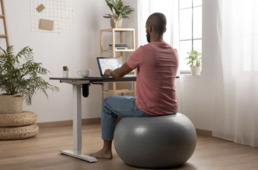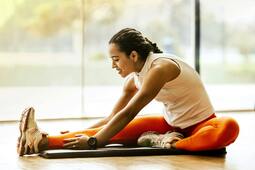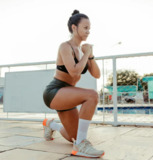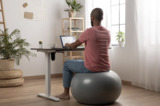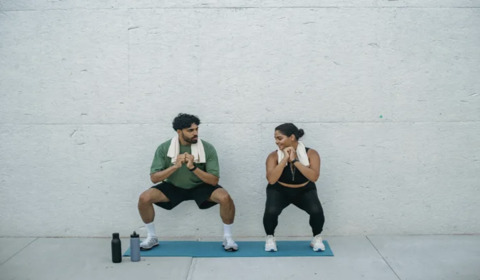
You don’t need a gym membership or fancy gear to get fit. Your own body is one of the most effective pieces of workout equipment you’ll ever have. Bodyweight exercises use gravity, balance, and control to build strength, endurance, and coordination. Whether you’re working out in your living room, backyard, or hotel room, these moves can help you sculpt muscle, boost metabolism, and improve mobility, all without spending a cent.
Let’s break down the best no-equipment exercises and how to combine them into a full-body workout that fits your life (and your floor space).
- Convenience: You can do them anywhere.
- Versatility: Adjust the difficulty by changing angles, tempo, or range of motion.
- Low cost: Zero equipment, zero excuses.
- Functional strength: These movements mimic real-life motions like bending, pushing, pulling, and stabilizing.
- Keep your core tight and chest lifted.
- Don’t let your knees cave inward. This can lead to injury
- Go as low as you can while maintaining good posture.
- Jump squats: Add a small jump at the top for cardio and explosive strength.
- Pulse squats: Stay low and pulse up and down for a burn that’ll make your legs shake.
- Single-leg squats (pistol squats): For advanced balance and control.
- Keep your chest upright and shoulders relaxed.
- Don’t let your front knee move past your toes.
- Engage your core to stay stable.
- Keep your feet hip width apart.
- Reverse lunges: Step backward instead of forward to reduce knee strain.
- Walking lunges: Great for cardio and mobility if you’ve got some space.
- Side lunges: Strengthen inner and outer thighs while challenging balance.
- Sagging hips (keep your core tight).
- Flaring elbows out too wide.
- Not going low enough—aim for your chest to come close to the floor.
- Knee push-ups: Perfect for beginners.
- Incline push-ups: Hands on a raised surface (like a couch or step) to make it easier.
- Decline push-ups: Feet elevated for extra challenge.
- Diamond push-ups: Hands close together to target the triceps.
- Side planks: Focus on the obliques.
- Plank shoulder taps: Lift one hand at a time to tap your shoulder, fighting to keep your hips steady.
- Plank walk-outs: From standing, walk your hands out to a plank, then back.
- Single-leg bridge: Lift one leg while keeping hips level.
- Marching bridge: Alternate lifting each leg while keeping hips off the floor.
- Move slowly and with control.
- Keep your lower back pressed into the floor.
- Avoid swinging your legs.
- Flutter kicks: Alternate small, quick leg movements just above the ground for an intense burn.
- Keep movements controlled at first before increasing speed.
- Try intervals: 20 seconds of work, 10 seconds of rest, repeat for a minute.
- Drive toward the opposite elbow while slightly rotating your core to work obliques.
- Squats – 3 sets of 15
- Push-ups – 3 sets of 10–15
- Lunges – 3 sets of 10 each leg
- Plank – 3 rounds of 30–60 seconds
- Glute bridges – 3 sets of 15
- Mountain climbers – 3 rounds of 30 seconds
- Burpees – 3 sets of 10
Why Bodyweight Training Works
Bodyweight exercises challenge your muscles to move and stabilize your own weight. Because you’re not relying on machines or added resistance, your body learns to coordinate multiple muscle groups at once. That means you’re not just getting stronger, you’re also improving balance, flexibility, and control.
Some other big benefits:
Now, let’s look at the top bodyweight exercises for a complete home workout.
Squats
Squats are the foundation of any good lower-body routine. They target the glutes, hamstrings, quads, and core, helping to improve balance and overall strength.
How to do it:
Stand with your feet shoulder-width apart, toes slightly turned out. Lower your hips back and down as if you’re sitting into a chair, keeping your chest up and your knees in line with your toes. Push through your heels to return to standing.
Tips for good form:
Variations:
Lunges
Lunges strengthen the legs, glutes, and hips while improving balance and coordination.
How to do it:
Stand with feet hip-width apart. Step forward with one leg and lower your hips until both knees form 90-degree angles. Your feet should still be hip width, not in a straight line. Your back knee should hover just above the ground. Push through your front heel to return to standing and switch legs.
Form check:
Variations:
Push-Ups
The classic push-up never goes out of style. It builds strength in your chest, shoulders, triceps, and core all at once.
How to do it:
Start in a plank position with your hands slightly wider than shoulder-width apart. Engage your core. Lower your chest toward the floor, keeping your body in a straight line from head to heels. Push back up to the starting position.
Common mistakes:
Variations:
Planks
Planks are the ultimate test of core strength and stability. They strengthen your abs, back, shoulders, and even glutes.
How to do it:
Start in a forearm plank position with elbows under shoulders and legs extended behind you. Engage your core, keeping your body straight from head to heels. Don’t let your hips sag or pike up.
Variations:
Pro tip:
Breathe. Most people forget and start holding their breath, which makes it harder than it needs to be.
Glute Bridges
A glute bridge is great for strengthening your glutes, hamstrings, and lower back, especially if you sit a lot during the day.
How to do it:
Lie on your back with your knees bent and feet flat on the ground, hip-width apart. Engage your core. Press through your heels to lift your hips until your body forms a straight line from shoulders to knees. Squeeze your glutes at the top, then lower back down.
Variations:
Leg Raises
Leg raises target the lower abs and help build a strong, stable core.
How to do it:
Lie flat on your back, legs extended, core engaged. Place your hands under your hips for support. Keeping your legs straight, lift them toward the ceiling until they form a 90-degree angle, then slowly lower them back down without touching the floor. If there is too much strain or your back starts to lift, you can keep your legs bent.
Tips:
Variation:
Triceps Dips (Chair or Floor)
You can do triceps dips using the edge of a sturdy chair, a low step, or even the floor. They’re great for toning the back of your arms.
How to do it:
Sit on the edge of a chair with your hands gripping the edge beside your hips. Slide your butt off the seat and lower your body by bending your elbows, keeping them close to your sides. Push through your palms to lift yourself back up.
Bodyweight-only alternative:
If you don’t want to use furniture, try crab dips—sit on the floor, hands behind you, and lift your hips up and down by bending your elbows.
Mountain Climbers
Mountain climbers mix strength and cardio, torching calories while targeting the core, shoulders, and legs.
How to do it:
Start in a plank position. Quickly drive one knee toward your chest, then switch legs in a running motion. Keep your hips low and your core tight throughout.
Tips:
Variation:
Burpees
Burpees are the ultimate full-body challenge. They build strength and stamina while pushing your cardiovascular limits.
How to do it:
Start standing. Drop into a squat, place your hands on the floor, and jump your feet back into a plank. Do a push-up, jump your feet back toward your hands, then jump explosively upward.
Why they work:
They combine squats, planks, and push-ups into one movement, making them incredibly efficient for burning fat and building endurance.
Modification:
Skip the push-up or jump if you’re a beginner.
Full Body Routine
Here’s a simple full-body bodyweight routine you can do anywhere:
Warm-up (5 minutes):
Jumping jacks, arm circles, bodyweight squats, light stretching.
Workout (30 minutes):
Cool-down (5 minutes):
Stretch your hamstrings, shoulders, and back. Breathe deeply. Congratulate yourself for not skipping it.
FAQ: Bodyweight Training Basics
1. Can I build muscle with bodyweight exercises?
Yes. If you train with intensity and proper form, you can absolutely build lean muscle. As you get stronger, make exercises harder by slowing down reps, increasing volume, or using single-leg/arm variations.
2. How often should I do bodyweight workouts?
Three to five times per week is ideal. Give your muscles at least one rest day between full-body sessions.
3. What’s the best time of day to work out?
Whenever you’ll actually do it. Morning, afternoon, or midnight—consistency matters more than timing.
4. I’m a beginner. Where should I start?
Start with modified push-ups, basic squats, planks, and glute bridges. Focus on form and control before adding intensity.
5. Do I need to stretch after?
Yes. Stretching helps improve flexibility, reduce soreness, and keep your muscles happy enough to do it all again tomorrow.

Conclusion:
You don’t need a gym to get strong, lean, and confident. With just your bodyweight and a bit of determination, you can create an effective fitness routine that fits your lifestyle. Squats, lunges, push-ups, planks, and burpees are more than enough to transform your body and boost your energy.
So clear a bit of space, turn on your favorite playlist, and let gravity do the work.
Related posts
